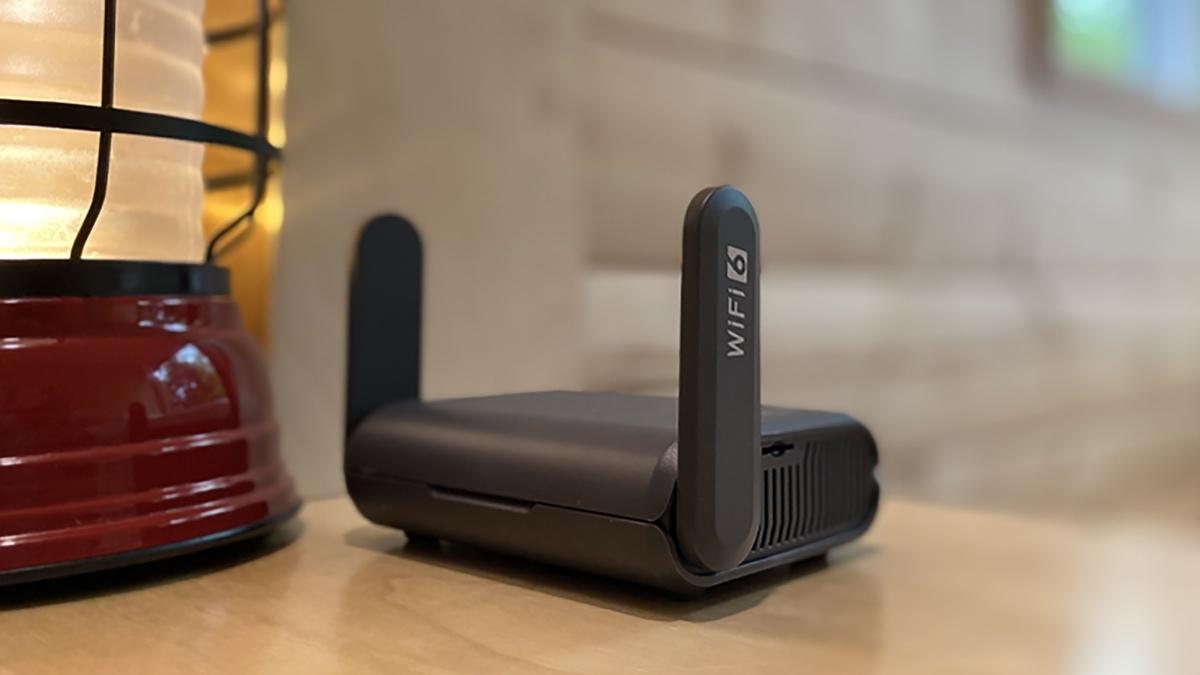Nvidia CEO Jensen Huang joins MediaTek CEO Rick Tsai on stage at Computex 2025.
Computex Taipei 2025 was busier than expected, with big announcements from the world’s most prominent silicon vendors and their customers and partners. While the show is predominantly focused on PCs, this year it had a lot of enterprise and datacenter announcements as well. I attended last year’s show in person, and the usual cast of suspects came out with announcements this year as well. While lots of component vendors had a bevy of announcements, too, here I want to focus on the big silicon vendors and OEMs.
Nvidia — NVLink Fusion And RTX 5060
NVLink Fusion, which allows third-party silicon vendors to use NVLink interconnect with Nvidia GPUs, is one of the most significant announcements that I can think of this year. This is mainly because it shows the dominance that Nvidia has in the AI space, especially when it comes to infrastructure. As one indicator of this, Nvidia already has partners like MediaTek, Marvell, AIchip, Astera Labs, Synopsys and Cadence onboard to adopt this technology. In the meantime, Nvidia has also announced that Fujitsu and Qualcomm datacenter CPUs will support NVLink Fusion, enabling their CPUs to work with Nvidia’s GPUs. This opens Nvidia’s ecosystem to a broader array of partners and reduces customers’ reliance on a completely Nvidia stack of CPUs, GPUs and interconnects. Interestingly, the list of partners doesn’t include AMD or Intel, which are directly competing with Nvidia in the datacenter.
Nvidia also announced the RTX 5060, which is the company’s mainstream gaming GPU. This card is supposed to sell for $299, making it the most accessible in the RTX 5000 series. (I reviewed the RTX 5090, the top end of this product line, earlier this year.) Since the xx60 series cards tend to be Nvidia’s highest-volume models, this is an important release for the company. Currently, the RTX 4060 laptop, RTX 3060 and RTX 4060 are the three most popular GPUs on Valve’s Steam Charts.
Nvidia bills the RTX 5060 as a GPU for 1080P gaming, which makes sense when you consider that 55% of all Steam gamers still use 1920 x 1080 — although 1440P is gaining steam, with nearly 20% of the gaming base. That is all to say that gamers looking for that tier of card are likely to expect a considerable performance improvement over much older generations. Nvidia is leaning heavily on frame-gen to show performance increases, and without that, the performance difference of the 5060 over the 4060 looks meager at times. One of the biggest critiques is that the new model is an 8GB card, which is likely to degrade its performance in higher resolutions and in future capabilities.
Qualcomm — NVLink Fusion And Dell Pro Max Plus PC
Delving further into the NVLink Fusion announcement, Qualcomm has only recently started to take the covers off its upcoming datacenter CPU product, so it seems that Nvidia doesn’t quite consider Qualcomm a threat as much as a potential growth opportunity. Details are still fairly light, but the expectation is that this server CPU will be an Oryon-based Arm processor that harkens back to the early days of Nuvia before Qualcomm acquired it. Now, Oryon DNA is in virtually everything Qualcomm makes and will enable the company to expand into the datacenter, where it hasn’t ever really had a presence outside of its Cloud AI 100 accelerator.
Speaking of the Cloud AI 100, Qualcomm and Dell announced a new Dell Pro Max Plus PC that leverages a special 75-watt TDP version of the AI 100 for use inside of a laptop with 64GB of RAM. This enables the end user to run up to a 109B-parameter model on-device without cloud computing. While this discrete NPU will not enable Copilot+ experiences on this PC, it will run models that would otherwise not be possible with any of Nvidia’s current mobile GPUs, which are limited to 24GB of RAM.
AMD — RX 9060 XT, Ryzen Threadripper 9000 Series
Not to be outdone by Nvidia and Qualcomm, AMD also launched its Radeon RX 9060 XT at Computex, targeted at the same $299 mainstream price point. This is AMD’s mainstream card designed to compete directly with Nvidia’s RTX 5060 series. AMD also justified its 8GB card by saying that 1080P gamers simply don’t need more RAM, though it did enable board partners to ship 16GB variants for a $349 MSRP.
In addition to a new mainstream GPU, AMD also teased the next generation of its Threadripper workstation CPUs. Threadripper is known as a “high-end desktop” or HEDT part and is mainly for content creators and developers. The Ryzen 9 9995WX is a 96-core CPU with peak boost clocks of 5.4 gigahertz and a 350-watt TDP. AMD also offers a non-Pro Threadripper series with up to 64 cores, which I expect will focus more on content creation and AI development.
AMD revived its high-performance reputation with the Threadripper series, and I believe that Threadripper keeps that spirit alive even though EPYC (datacenter) and Ryzen for gaming have both captured their respective performance crowns. I’m a big fan of Threadripper for video production and wouldn’t mind having a ton of Zen cores to throw at any video rendering workload. That said, AMD has already upped the ante quite a bit with its 3-D V-Cache (X3D) memory for its consumer Ryzen parts and taken the performance crown in gaming and content creation. One of Threadripper’s greatest attributes is the number of PCIe 5.0 lanes it offers (128), which enables multiple high-end GPUs in a single system and class-leading PCIe Gen 5 SSDs. I wish consumer platforms had more PCIe lanes; I keep having to compromise on storage because there are only so many lanes available (24) on my 9800X3D, with 16 lanes automatically going to my GPU.
Intel — Arc Pro B50 And B60, Plus More Panther Lake Teasers
Not to be left behind, Intel also had some new GPUs to announce, but not for the mainstream. That’s because Intel has already launched its Arc B series for mainstream gamers with the Arc B580, which retails for around $299 and offers 12GB of memory. Instead, at Computex Intel moved the Arc series toward the enterprise with two new GPUs specifically aimed at AI applications, the Arc Pro B50 and B60. The B50 provides 16GB of VRAM at around $299, while the B60 offers 24GB of VRAM and performs similarly to the Arc B580 consumer card but with double the memory capacity for AI tasks. Some of Intel’s board partners are also building dual-GPU cards with 48GB of RAM to push the AI envelope further. Intel also announced a workstation platform called Battlematrix that will allow up to 192GB of VRAM in a single system via multiple Arc GPUs to run larger models (70B parameters and up).
While Intel didn’t hold a press conference at Computex this year, it did have a demo room showing multiple demos running on Intel’s Panther Lake processors. Intel also reiterated that the company is on track to deliver the first Panther Lake designs in the second half of this year with volume production next year, on schedule with Intel’s previous announcements. The demos at Computex showed Panther Lake running DaVinci Resolve AI masking and a few other AI-enhanced features. Intel also demoed photo upscaling from Topaz Labs, a popular ISV for Intel, when showing off new silicon capabilities. You can get a walk-through of all three live demos on Intel’s YouTube channel.
MediaTek — 2nm With TSMC And NVLink Fusion
Last but certainly not least was MediaTek, which held one of the main Computex keynotes with CEO Rick Tsai, who was joined on stage at the end by Nvidia’s Jensen Huang. One of the biggest announcements that Tsai made was the upcoming production of MediaTek’s next-generation chip utilizing TSMC’s 2nm process node; the company expects the first high-volume device to tape out in September. MediaTek expects the 2nm production node to deliver a 15% performance improvement or a 25% power reduction versus the 3nm node. Tsai also spoke about future nodes from TSMC, including A16, A14 and “whatever after that.” It is also essential to know that MediaTek is an Intel Foundry customer, with competing nodes coming soon from Intel.
Tsai also spoke about the importance of MediaTek’s relationship with Nvidia, and detailed MediaTek’s role in designing the powerful 20-core Arm CPU inside the new Nvidia GB10 chip for the DGX Spark Supercomputer with 10 Cortex-X925 and 10 Cortex-A725 cores. Additionally, MediaTek’s fledgling ASIC business can capitalize on MediaTek’s relationship with Nvidia to leverage NVLink Fusion where appropriate for its ASIC customers. Tsai’s relationship with Huang and Nvidia was also center stage when he gave night market fruit to Huang, which I thought was a fun callback to Huang’s keynote last year, where he spoke about the night market and about a specific fruit vendor.
Analyst Takeaways
This year’s Computex had a slower pace than last year, but it wasn’t without exciting announcements from all the major AI silicon vendors. Some of the biggest announcements came in the form of enterprise announcements like Nvidia’s NVLink Fusion, but there were still plenty of consumer products announced, like the RTX 5060 and RX 9060. We also got plenty of new CPU announcements from AMD and Qualcomm, even though those products will likely be available further down the road.
In my view, Computex focused heavily this year on filling the gaps in companies’ product lineups and satisfying the needs of consumers and enterprises, whether at the high end with the Dell Pro Max Plus or at the low end with the entry-level gaming cards from Nvidia and AMD. Computex sets up the second half of 2025 for plenty more product announcements based on all this new silicon.
Moor Insights & Strategy provides or has provided paid services to technology companies, like all tech industry research and analyst firms. These services include research, analysis, advising, consulting, benchmarking, acquisition matchmaking and video and speaking sponsorships. Of the companies mentioned in this article, Moor Insights & Strategy currently has (or has had) a paid business relationship with AMD, Arm, Astera Labs, Cadence, Dell, Fujitsu, Intel, Marvell, MediaTek, Nvidia, Qualcomm and Synopsys.









